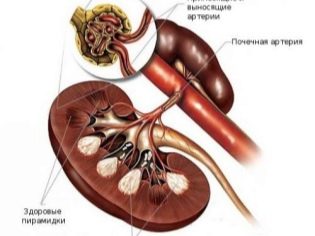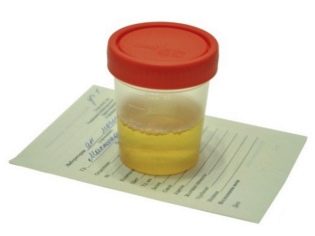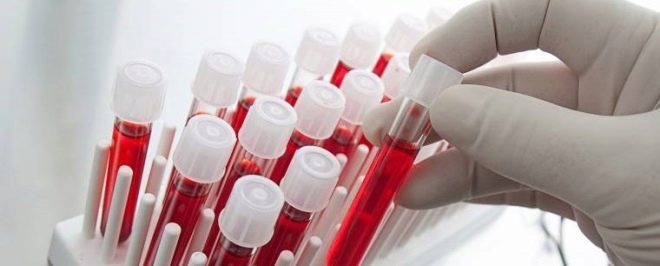Dysmetabolic nephropathy in children
In addition to common childhood diseases, there are also those that are recorded in babies quite infrequently. One of these pathologies is dysmetabolic nephropathy. Nephrologists are more common with this condition than pediatricians.
What it is?
Dysmetabolic nephropathy is a pathological condition that leads to impaired kidney function. This clinical symptom complex is not a separate disease. Various diseases can lead to the development of this adverse and even dangerous condition in a child.
If the doctor detects dysmetabolic nephropathy in a baby, this indicates the presence of a whole complex of disorders in the urinary organs and kidneys.
According to statistics, every third baby has the clinical signs of this condition. Dysmetabolic nephropathy is not a diagnosis at all or even a sentence. With the elimination of the causes that contributed to its development, it completely disappears. This requires timely diagnosis and appropriate treatment of the underlying disease.
Usually, signs of dysmetabolic nephropathy occur in children unplanned. When conducting urine screening, doctors identify changes in it that are clinical signs of functional impairment of the kidneys. This pathological condition can develop at different ages. The long course of dysmetabolic nephropathy leads to the development of nephrotic syndrome in a child.
This condition is manifested by persistent edema, which is mainly located on the face and upper half of the body. Nephrotic syndrome usually occurs in 13–16 out of 100,000 babies. There are population features in the incidence.
To eliminate this pathological condition, a complex treatment is required, which is usually compiled by a pediatric nephrologist.
The reasons
Dysmetabolic nephropathy in children is, above all, impaired metabolism. Persistent changes lead to the fact that various salt crystals appear in the baby's urine. In composition, they may be different. This is largely determined by the chemical composition of the stones.
Multiple causes lead to the development of dysmetabolic nephropathy in babies. In some cases, installing them is quite difficult. Often, the pathological condition of the kidneys develops as a result of several causal factors simultaneously. The development of a pronounced impairment of the kidneys leads to:
- various chemical intoxication;
- severe poisoning with various industrial products;
- improper and poor nutrition;
- anatomical defects immediately after birth.
Also, scientists say the presence of congenital forms of the disease. In this case, changes in the work of the kidneys are observed already during the first months after the birth of the child. This condition usually leads to a complicated course of pregnancy. If during the gestation of the fetus, the expectant mother develops severe gestosis or toxicosis in the later periods, this significantly increases the risk of functional disorders of the urinary organs in the child.
Fetal conditions in which fetal hypoxia occurs also result in a congenital form of dysmetabolic nephropathy. If oxygen starvation of tissues has arisen in the early stages of pregnancy, then this contributes to the violation of organogenesis.At the same time, the laying and intrauterine development of the kidneys is impaired. Subsequently, the child may experience various diseases of the urinary tract: acute glomerulonephritis with nephrotic syndrome, pyelonephritis and others. The nephrotic form of glomerulonephritis in a young child is a rather dangerous disease that requires mandatory consultation with a nephrologist and the appointment of special treatment. In some cases, life-long therapy.
Many researchers talk about hereditary predisposition. If parents or close relatives have a tendency to urolithiasis, then often the child also has characteristic changes.
Some genetic mutations can also cause kidney problems. Such cases are quite rare.
The idiopathic variant of dysmetabolic nephropathy is also recorded in pediatric practice. This clinical condition is established by exclusion. Usually, doctors carry out extended differential diagnostics for this purpose, which excludes all possible alternative causes that could cause abnormalities in the kidneys in the child. Idiopathic nephropathy occurs in young children.
Classification
The basis of any dysmetabolic nephropathy are pronounced metabolic disorders. This is manifested by deviations in the normal chemical composition of urine and the appearance of various salt crystals. Depending on the substances in their composition, there are several variants of this state.
Taking into account the chemical composition of the crystals, the following clinical variants are distinguished:
- Oxalaturia - a condition in which a large amount of oxalate appears in the urine. This pathological process is caused by systemic disorders of calcium metabolism in the body. Excessive formation of oxalic acid leads to the appearance of its crystals (oxalates) in the urine. This condition may be of varying severity. The most insignificant signs appear at 1 degree of oxalaturia.
- Uraturia. It is characterized by the appearance of urate crystals in the urine residue. This pathology can be primary and secondary. Lesch-Nyhan syndrome is considered to be the main inherited cause of the appearance of a large number of urate accumulations in the urine in children. Different types of hemolytic anemia, erythremia, myeloma, pyelonephritis are the most common diseases that cause urate dysmetabolic nephropathy in children.
- Phosphaturia. It is characterized by the appearance of a large amount of phosphate crystals in the general urine analysis. Often, various infectious diseases that develop in the kidneys lead to this pathological disorder. Diseases of the central nervous system, as well as various pathologies of the parathyroid glands lead to impaired phosphorus metabolism in the children's body. There are also dosage forms of phosphate dysmetabolic nephropathy, caused by long-term use of anticancer drugs, thiazide diuretic, salicylates, and cyclosporine A.
- Cystine form. It occurs in children with a violation in the exchange of cystine. This substance is the main product of methionine metabolism. Excess cystine crystals begin to be deposited in the renal tubules, interstitial tissue of the kidneys, spleen and liver, lymph nodes, blood cells, spinal cord. Secondary cystine dysmetabolic nephropathy may develop with some variants of pyelonephritis or tubular interstitial nephritis.
- Mixed It is characterized by the appearance of various types of crystals. May be congenital and acquired. Secondary forms of mixed dysmetabolic nephropathy are found in various chronic diseases of the kidneys and urinary tract. It is registered in children of any age.
Symptoms
Many forms of dysmetabolic nephropathy are asymptomatic.Baby can not be bothered. The behavior and well-being of the child does not change. Pathological abnormalities in the kidneys are detected, as a rule, during a urinalysis. The various crystals that appeared in it indicate that the baby has problems with metabolic processes.
In some cases, nephropathy occurs with the appearance of various adverse symptoms. Usually they are systemic. So, babies with congenital oxalaturia also have signs of arthropathy, gout, spondylosis, urolithiasis, and diabetes mellitus. These are combined pathological conditions. They arise as a result of an initial disturbance in the metabolism in the body at different levels.
Metabolic disorders are observed in all clinical variants of dysmetabolic nephropathy.
Kids with metabolic functional disorders of the kidneys are also often obese, allergic pathologies, and hypotension. They have problems with urination, there may be a slight burning or soreness when urinating. Symptoms of dysmetabolic nephropathy are not very specific and largely depend on the underlying disease.
Diagnostics
To discover nephropathy on your own at home is a rather difficult and sometimes impossible task. In some cases, crystals can be found when pouring urine from a baby pot. It becomes quite turbid and has a pronounced white precipitate. Normally, urine has a straw-yellow color and is quite transparent. The appearance of turbidity or sediment must alert the parents and motivate them to seek medical advice.
A pediatric urologist or nephrologist is necessarily involved in establishing the diagnosis of dysmetabolic nephropathy. These specialists have the necessary knowledge and, most importantly, experience in treating such pathological conditions in children. After conducting a clinical examination and examination, they will recommend several additional tests that will help to clarify the diagnosis.
The basic diagnosis of dysmetabolic nephropathy includes the mandatory general blood test. This simple and affordable laboratory test allows you to identify various salt crystals in the urinary residue, determine the density and specific gravity of urine, as well as recognize the protein. The number of leukocytes and erythrocytes in this analysis establishes the presence of any kidney and urinary tract diseases in a child, which could be the cause of his metabolic nephropathy. In a number of difficult diagnostic cases, physicians resort to more specific urine tests. Urine analysis according to Nechiporenko helps to identify some latent forms of pyelonephritis and glomerulonephritis, which often lead to the development of metabolic disorders in the kidneys in babies.
If the cause of kidney disease is a bacterial infection, then bacteriological examination of the urine with the determination of sensitivity to antibiotics will be appropriate.
Typically, this analysis is performed within a week and gives an accurate description of what pathogenic microflora is in the urine. This test gives doctors more opportunities to prescribe adequate and correct treatment.
To identify kidney stones, as well as to establish various structural pathologies, an ultrasound study with Doppler mapping is prescribed. Each urinary tract disease is characterized by its own specific echo-signs. With the help of high-precision examination, it is possible to identify various pathologies of the kidneys, even at the very early stages. The method is safe and can be used even in the smallest patients.
For older children, in some cases, a review urography is used. With the help of the introduction of a special contrast, the work of the kidneys is evaluated, and functional disorders associated with pathologies of urine excretion are detected.A photo depicting the result of a review urography gives specialists a comprehensive picture of the existing pathologies of the kidneys and urinary tract.
Treatment
Therapy for dysmetabolic nephropathy is individual for each child. The variety of clinical variants of the disease causes the use of various tactics to eliminate the adverse effects of metabolic disorders. The choice of treatment remains for the children's urologist or nephrologist.
The doctor determines the duration and intensity of therapy based on the physiological characteristics of the child and the presence of concomitant chronic diseases.
For the treatment of impaired metabolism in the kidneys are used:
- Diet. Nutrition of babies should be high-calorie and meet age standards for all necessary nutrients. All rich and strong meat broths, which contain quite a lot of various extractive substances, are excluded from the children's menu. When the tendency to the formation of oxalates should be limited in the diet eating cranberries, lingonberries, sorrel, beets, carrots, fresh greens. Confectionery sweets containing cocoa beans are also subject to limitation.
- Care. If dysmetabolic nephropathy has a secondary origin and some kidney disease has contributed to its appearance in a child, then the baby’s well-being should be monitored as closely as possible. When the first signs of exacerbation of chronic pathology of the urinary tract appear, a baby should be shown to the doctor. The entire acute period of the disease the child should stay at home. Babies with high body temperature should be on bed rest.
- Drug therapy. It consists in prescribing drugs for the treatment of the underlying disease and the symptomatic treatment of various metabolic disorders. To improve kidney function in childhood, various antioxidant agents and multivitamin complexes are used. In case of urinary disorders, diuretic (diuretic) agents are prescribed.
Duration and frequency, as well as dosages of drugs are discussed individually with your doctor.
- Phytotherapy. Successfully used to normalize the chemical composition of urine in babies for many years. It has long been observed that some medicinal herbs have a uroseptic effect and normalize the work of the kidneys. You can use them as tea or add to food.
- Sufficient drinking mode. In order for the crystals not to stagnate in the kidneys, and urolithiasis does not occur, you should use sufficient amount of water per day. On average, a student should drink at least 1-1.5 liters of fluid. Water entering the body ensures the normal functioning of the kidneys and reduces the risk of dysmetabolic nephropathy.
For more information on nephropathy, see the next issue of the Medical Herald program.





























